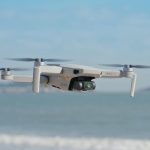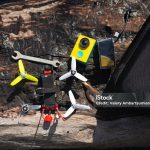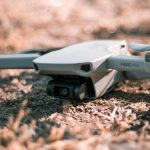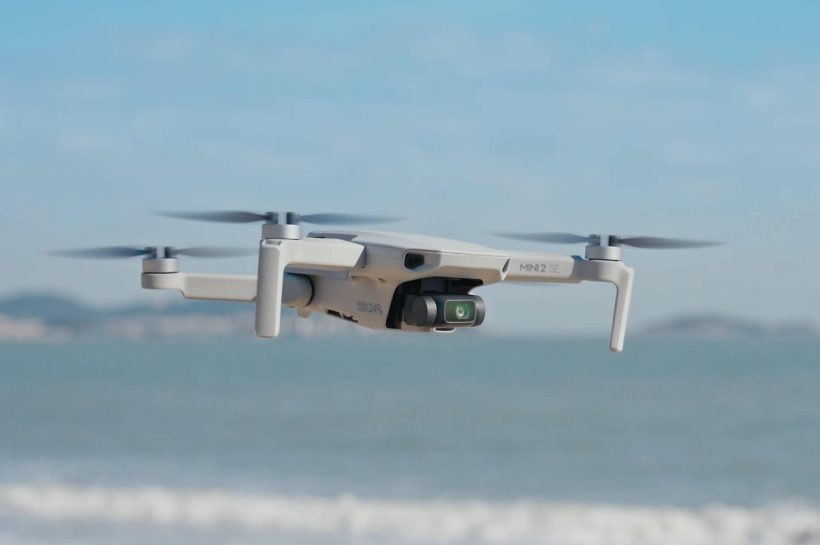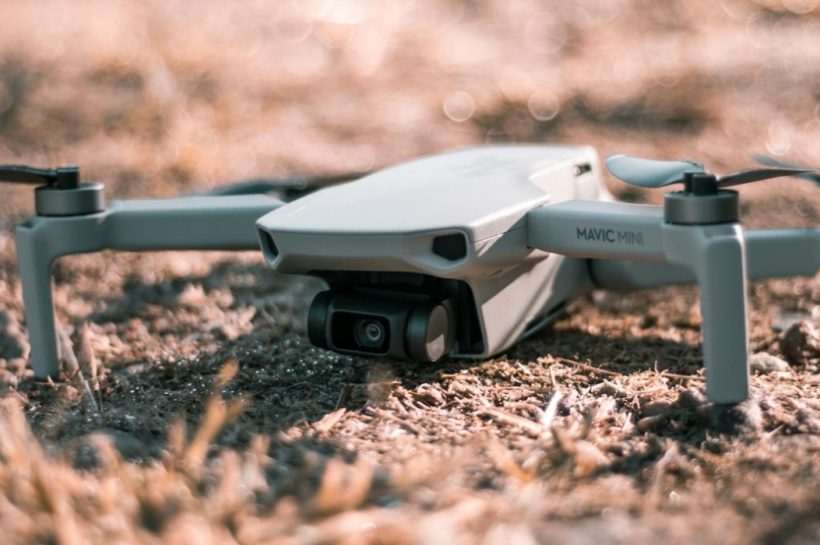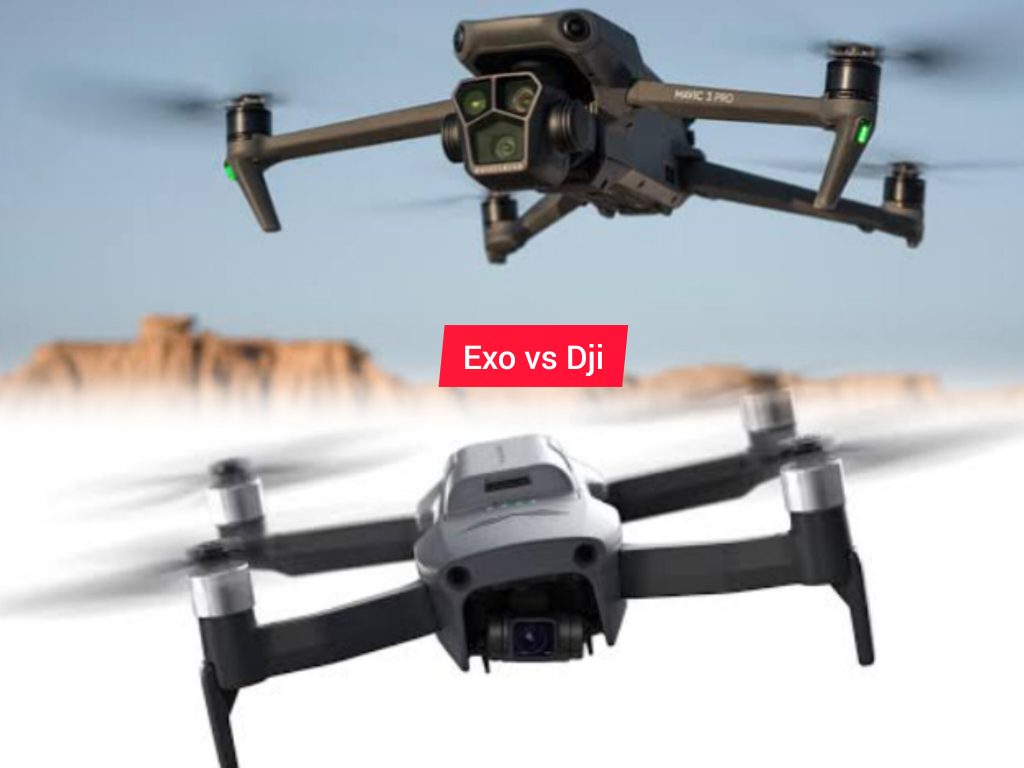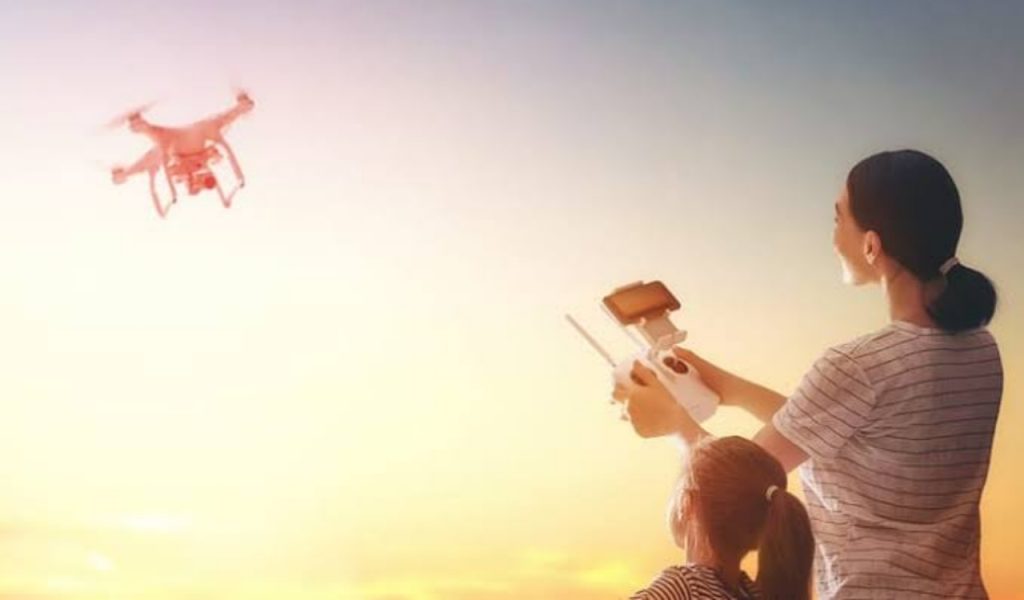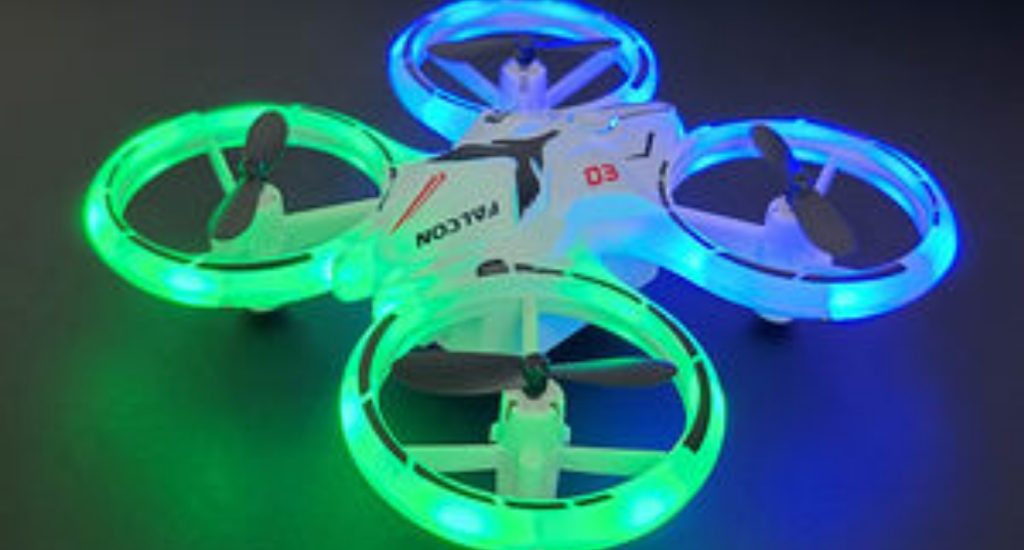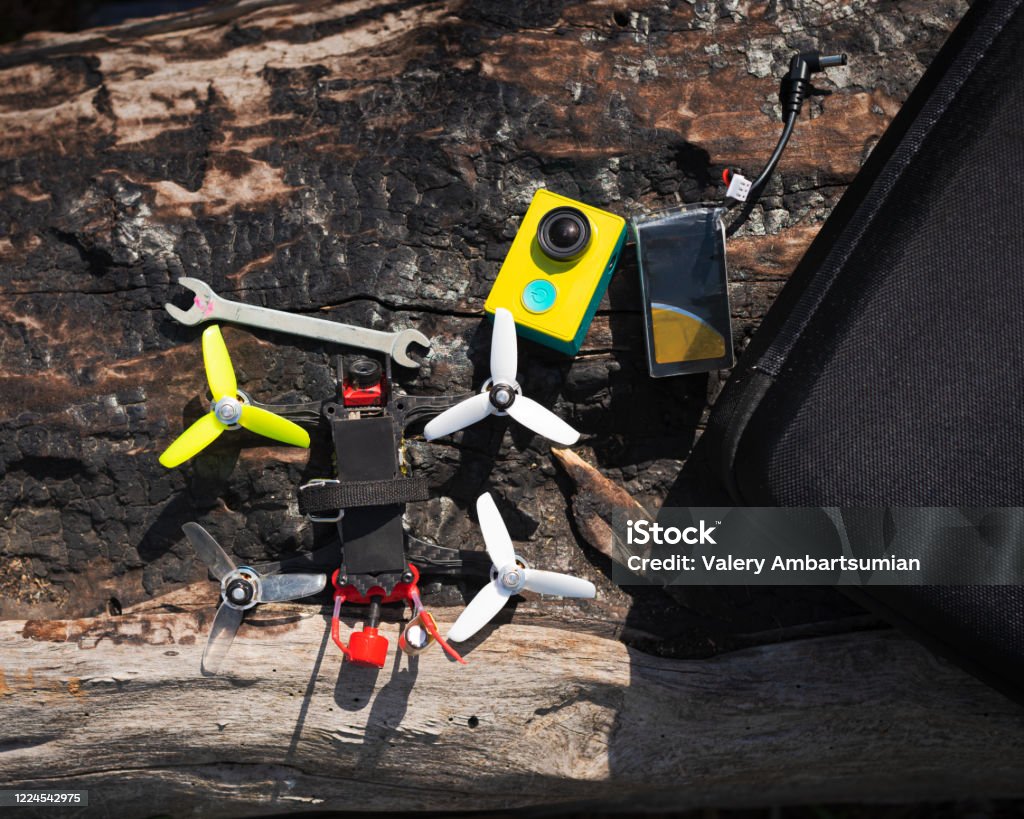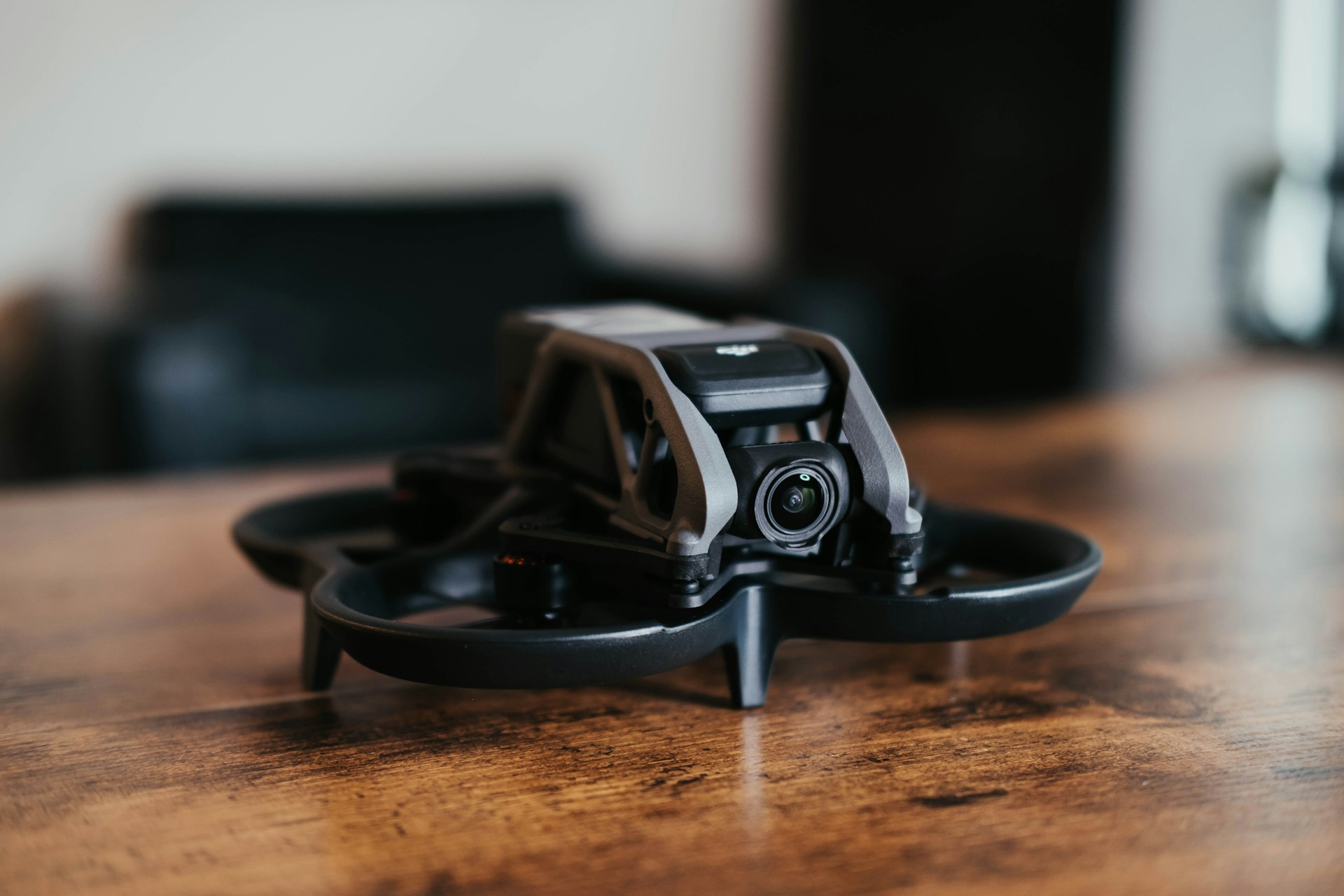The use of drones has been increasing rapidly in recent years, with many industries starting to see their potential. From delivering packages to capturing stunning aerial footage, drones are revolutionizing the way we approach tasks that were once difficult or even impossible to accomplish. The possibilities for this technology are endless, with new developments and applications being discovered every day. In this post, we will explore the future of aerial technology and the potential that drones offer. We will take a closer look at how these unmanned aerial vehicles are changing the game for industries like agriculture, construction, and filmmaking, and how they are shaping the future of transportation and logistics. So, fasten your seatbelts and get ready to explore the exciting world of drones!
1. Introduction to the rising popularity of drones
Drones, once considered a niche technology, have soared in popularity in recent years, captivating the imagination of individuals and industries alike. These unmanned aerial vehicles, equipped with cameras and advanced capabilities, have revolutionized various sectors, from photography and videography to agriculture, infrastructure inspection, and even delivery services.
The rising popularity of drones can be attributed to several factors. Firstly, their accessibility has greatly improved, with affordable consumer models flooding the market. This has allowed hobbyists, enthusiasts, and professionals to easily enter the world of drones and explore the endless possibilities they offer.
Moreover, the rapid advancement of technology has significantly enhanced the capabilities of drones. With improved flight stability, longer battery life, and advanced camera systems, drones are now capable of capturing breathtaking aerial shots and footage that were once only possible with expensive equipment or manned aircraft.
The versatility of drones is another key factor driving their popularity. From capturing stunning landscapes and aerial views for photography and cinematography purposes, to assisting in search and rescue operations, monitoring wildlife populations, and even aiding in disaster management, drones have proven their worth across various sectors.
Furthermore, the potential of drones in commercial applications is immense. They have the ability to revolutionize industries such as agriculture, where they can be used for crop monitoring, precision spraying of fertilizers and pesticides, and even mapping and analyzing soil conditions. In the construction and infrastructure sectors, drones can aid in surveying, inspecting structures, and monitoring progress, saving time, and reducing costs.
As the popularity of drones continues to rise, regulations and policies are evolving to ensure safe and responsible drone usage. Governments and aviation authorities are working on establishing guidelines for drone operation, privacy concerns, and airspace management. This will further unlock the potential of drones, allowing them to be integrated seamlessly into our daily lives.
In this blog series, we will delve deeper into the fascinating world of drones, exploring their applications, potential future advancements, and the impact they are already having on various industries. Get ready to embark on an exhilarating journey as we unlock the full potential of aerial technology and discover the limitless possibilities that drones offer.
2. The various applications of drones in different industries
Drones, once a futuristic concept, have now become an integral part of numerous industries, revolutionizing the way we perceive aerial technology. From capturing breathtaking aerial shots for filmmakers to delivering packages efficiently, drones have proven their versatility across various sectors.
In the entertainment industry, drones have transformed the art of cinematography. They enable filmmakers to capture stunning aerial shots that were once only possible with expensive helicopters or cranes. With drones, directors can now effortlessly film sweeping landscapes, chase scenes, or even capture the essence of urban environments from a unique perspective. This has opened up a whole new realm of creative possibilities, allowing filmmakers to tell their stories in innovative ways.
The agriculture industry has also benefited greatly from the use of drones. With the ability to monitor crops from above, farmers can quickly identify areas that require attention, such as crop diseases or irrigation issues. Drones equipped with thermal imaging cameras can even detect variations in crop temperature, providing valuable insights into plant health. By leveraging drone technology, farmers can optimize their yields, reduce costs, and adopt more sustainable practices.
In the construction sector, drones have become indispensable tools for surveying and mapping. Instead of relying on manual measurements or expensive land surveying equipment, construction professionals can now use drones equipped with high-resolution cameras and LiDAR sensors to capture accurate 3D models of construction sites. This not only saves time and resources but also enhances safety by reducing the need for workers to physically access hazardous areas.
Beyond these industries, drones have found applications in search and rescue operations, wildlife monitoring, infrastructure inspections, and even in the delivery of goods. The potential of drones seems limitless, with ongoing advancements in technology continuously expanding their capabilities.
As we explore the future of aerial technology, it is exciting to witness the ever-evolving applications of drones in different industries. From enhancing creativity in filmmaking to increasing efficiency in agriculture and construction, drones are unlocking new possibilities and reshaping the way we work and experience the world around us.
3. The benefits and advantages of using drones in aerial operations
The utilization of drones in aerial operations has revolutionized various industries, opening up a world of possibilities and redefining the way we approach tasks that were once time-consuming, costly, or even dangerous. The benefits and advantages of using drones in these operations are truly remarkable.
One of the key advantages is the significant improvement in efficiency and productivity. Drones can access difficult-to-reach areas and navigate through challenging terrains with ease, eliminating the need for human labor or specialized equipment. This allows for quicker and more streamlined operations, saving both time and resources.
In industries such as agriculture, drones have proven to be invaluable tools. Equipped with advanced sensors and imaging technology, they can provide farmers with real-time data on crop health, soil conditions, and irrigation needs. This data-driven approach enables precision agriculture, where farmers can optimize their practices, reduce waste, and increase overall yield.
Another significant advantage is the enhanced safety and reduced risk associated with certain operations. Drones can be deployed in hazardous environments, such as inspecting infrastructure in remote or dangerous locations, without endangering human lives. They can assess the integrity of structures, detect potential faults or damages, and even assist in search and rescue operations.
Moreover, drones have transformed the field of aerial photography and videography. Traditional methods often required expensive equipment, helicopters, or cranes to capture stunning aerial shots. With drones, photographers and filmmakers can easily capture breathtaking images and footage from unique angles, providing a fresh perspective and adding a touch of cinematic flair to their projects.
Furthermore, the cost-effectiveness of drone technology cannot be overlooked. Compared to traditional methods, deploying drones for various operations is considerably more affordable. With advancements in technology, drones are becoming more accessible to individuals and businesses alike, democratizing the benefits and opportunities they offer.
In summary, the benefits and advantages of using drones in aerial operations are manifold. From increased efficiency and productivity to enhanced safety and reduced costs, the potential of this technology is vast and continues to evolve. As we explore the future of aerial technology, drones are set to play a pivotal role in transforming industries, driving innovation, and unlocking new possibilities.
4. The current limitations and challenges faced by drone technology
Despite the incredible advancements in drone technology, there are still limitations and challenges that the industry faces. Understanding these challenges is crucial for unlocking the full potential of drones and ensuring their safe and efficient use in various fields.
One of the primary limitations is the current battery technology. Drones heavily rely on batteries for power, and the limited battery life restricts their flight time and range. This poses a challenge, especially in applications where extended flight durations are required, such as aerial surveillance, package delivery, or search and rescue missions. Manufacturers and researchers are actively working on developing longer-lasting batteries and exploring alternative power sources like solar energy to overcome this limitation.
Another challenge is regulatory frameworks and airspace restrictions. Many countries have strict rules and regulations surrounding drone operation to ensure safety and privacy. These regulations often limit the areas where drones can be flown and impose restrictions on altitude, distance, and operating conditions. Adhering to these regulations can be complex, particularly for commercial drone operators who need to navigate through different jurisdictions. It is crucial for regulators to continue working closely with industry stakeholders to strike a balance between safety and innovation, promoting responsible drone use while accommodating their growing applications.
Furthermore, the issue of privacy and public perception remains a significant concern. Drones equipped with high-resolution cameras and sensors can capture detailed imagery and data, raising privacy concerns among individuals and communities. It is essential to establish ethical guidelines and standards for drone usage to address privacy concerns and ensure responsible and transparent practices.
Lastly, the technological limitations of drones themselves require constant research and development. Improvements in stability, obstacle avoidance, and payload capacity are key areas of focus. Advancements in artificial intelligence and machine learning are being leveraged to enhance autonomous flight capabilities and enable drones to navigate complex environments and perform complex tasks with minimal human intervention.
Despite these challenges, the future of drone technology looks promising. As the industry continues to innovate and overcome these limitations, we can expect to see drones playing an increasingly significant role in various sectors, ranging from agriculture and infrastructure inspection to emergency response and beyond. By addressing these challenges head-on, we can unlock the true potential of drones and revolutionize the way we interact with aerial technology.
5. The advancements in drone technology and its potential for the future
The rapid advancements in drone technology have opened up a world of possibilities and have ignited widespread excitement about the future of aerial technology. From their humble beginnings as remote-controlled toys, drones have evolved into sophisticated flying machines with a plethora of applications across various industries.
One of the key areas where drones are making a significant impact is in the field of photography and videography. With their ability to capture stunning aerial shots and footage, drones have revolutionized the way we document events, create films, and capture breathtaking landscapes. They offer a unique perspective that was previously only accessible to professional filmmakers with access to helicopters or cranes. Now, anyone with a drone and a creative vision can capture stunning aerial visuals with ease.
Beyond the realm of photography and videography, drones are being utilized in a range of industries such as agriculture, construction, delivery services, and even emergency services. In agriculture, drones equipped with advanced sensors and imaging technology can monitor crops, detect crop diseases, and optimize irrigation systems. This not only improves efficiency but also reduces costs and minimizes environmental impact.
In the construction industry, drones are transforming the way projects are monitored and inspected. They can capture high-resolution images and videos of construction sites, allowing project managers to assess progress, identify potential issues, and ensure compliance with safety regulations.
The potential for drones in delivery services is also immense. Companies like Amazon and DHL are already experimenting with drone delivery systems, aiming to revolutionize the logistics industry by providing fast and efficient delivery options, especially in remote areas or during emergencies.
Moreover, drones have the potential to play a crucial role in emergency services, aiding in search and rescue missions, disaster management, and surveillance operations. Their ability to quickly navigate through challenging terrain and provide real-time data can significantly enhance the effectiveness and efficiency of emergency response teams.
As drone technology continues to advance, we can expect to see further integration with artificial intelligence, automation, and data analytics. This will unlock even more potential, allowing drones to perform complex tasks autonomously, analyze vast amounts of data, and make informed decisions in real-time.
While there are still regulatory challenges and concerns regarding privacy and safety that need to be addressed, the future of aerial technology looks incredibly promising. Drones have already proven their worth in various industries, and as technology continues to evolve, we can only imagine the endless possibilities that lie ahead. From revolutionizing industries to improving our daily lives, drones are set to transform the way we interact with the world from above.
6. The role of drones in enhancing productivity and efficiency in various sectors
Drones have revolutionized many industries by enhancing productivity and efficiency in ways that were previously unimaginable. These agile aerial machines have proven to be incredibly versatile, offering a wide range of applications across various sectors.
In agriculture, drones have become an indispensable tool. Equipped with high-resolution cameras and sensors, they can survey vast fields, providing farmers with valuable data on crop health, irrigation needs, and pest infestations. This information allows farmers to make informed decisions, optimize resource allocation, and ultimately increase yields while minimizing environmental impact.
The construction industry has also embraced the potential of drones. These unmanned aerial vehicles (UAVs) can perform site inspections and aerial surveys with unparalleled accuracy and speed. By capturing detailed imagery and producing accurate topographic maps, drones assist in project planning, monitoring progress, and identifying potential issues. This streamlines workflows, reduces costs, and enhances safety on construction sites.
Furthermore, drones have been deployed for search and rescue operations, particularly in challenging terrains or disaster-stricken areas. Equipped with thermal cameras and advanced imaging systems, drones can quickly locate missing persons, assess hazardous situations, and provide vital information to rescue teams. Their ability to access hard-to-reach locations and cover large areas in a short amount of time has proven crucial in saving lives and expediting emergency responses.
In the realm of logistics and delivery, drones offer a promising solution to last-mile challenges. With the ability to navigate through congested urban areas and deliver packages efficiently, drones have the potential to revolutionize the e-commerce industry. Companies like Amazon and UPS have already started experimenting with drone delivery services, allowing for faster and more convenient shipments.
These are just a few examples of how drones are transforming various sectors by enhancing productivity and efficiency. As technology continues to advance, the possibilities for drone applications are endless. From infrastructure inspections to environmental monitoring and beyond, the future of aerial technology is brimming with potential waiting to be unlocked.
7. The impact of drones on the economy and job market
The rise of drones in recent years has not only revolutionized the way we capture stunning aerial shots or deliver packages, but it has also had a significant impact on the economy and job market. As this technology continues to advance and become more accessible, the potential for growth and innovation in various industries is immense.
One of the key areas where drones have made a significant impact is in the field of photography and videography. With their ability to capture breathtaking aerial footage, drones have opened up new possibilities for filmmakers, real estate agents, and even event planners. This has created a demand for skilled drone operators and aerial photographers, leading to the emergence of a whole new job market.
Moreover, the use of drones in industries such as agriculture, construction, and infrastructure has proven to be highly efficient and cost-effective. Drones equipped with advanced sensors and imaging capabilities can monitor crop health, identify areas of concern, and improve overall productivity. In construction and infrastructure projects, drones enable effective site inspections, surveying, and monitoring, saving both time and resources.
The economic potential of the drone industry is undeniable. According to a report by PwC, the global market for drone-powered solutions is estimated to be worth over $127 billion. This includes not only the manufacturing and sales of drones but also the services and applications they enable. As the demand for drone-related services continues to grow, so does the need for skilled professionals who can operate and maintain these flying machines.
Furthermore, the drone industry has the potential to create a multitude of new job opportunities. From drone pilots and operators to data analysts and software developers, the ecosystem surrounding this technology is expanding rapidly. The growth in the drone industry also stimulates related sectors such as manufacturing, software development, and regulatory agencies.
However, with the rapid growth of this industry, there are also challenges that need to be addressed. Ensuring safety, privacy, and regulatory compliance are crucial factors that must be considered to maximize the benefits of drones while minimizing the risks. This requires collaboration between industry stakeholders, government bodies, and regulatory agencies to establish guidelines and standards that promote responsible drone use.
In conclusion, the impact of drones on the economy and job market is undeniable. From transforming industries to creating new job opportunities, drones have unleashed a world of possibilities. As this technology continues to evolve and become more integrated into our daily lives, it is essential to embrace its potential and navigate the challenges to unlock the full benefits of aerial technology.
8. The ethical and legal considerations surrounding the use of drones
As the use of drones continues to increase in various industries, it is crucial to address the ethical and legal considerations associated with their use. While drones offer remarkable capabilities and possibilities, they also raise concerns that need to be carefully examined.
One of the primary ethical concerns is privacy. Drones equipped with cameras can easily invade people’s privacy by capturing images or videos without their consent. This raises important questions about how and when drones should be used to ensure that individuals’ privacy rights are respected. Clear regulations and guidelines regarding drone usage can help strike a balance between reaping the benefits of aerial technology and protecting people’s privacy.
Another ethical consideration is the potential misuse of drones. In the wrong hands, drones can be used for illegal activities, such as unauthorized surveillance, smuggling, or even causing harm to others. It is essential to establish strict regulations and implement effective monitoring systems to prevent such misuse and hold accountable those who violate the rules.
From a legal standpoint, drone usage is subject to various regulations and restrictions. Different countries have their own laws governing drone operations, including limitations on flight altitude, restricted airspace, and registration requirements. It is crucial for drone operators to familiarize themselves with the applicable regulations and obtain any necessary permits or licenses to ensure compliance.
Moreover, the safety aspect cannot be ignored. Drones share airspace with manned aircraft, and the potential for collisions or accidents is a significant concern. Developing technologies like collision-avoidance systems and implementing proper training and licensing procedures for drone operators are important steps in ensuring the safe integration of drones into our airspace.
By addressing the ethical and legal considerations surrounding drone usage, we can unlock the full potential of this aerial technology while also safeguarding the rights, privacy, and safety of individuals. It is a collective responsibility to shape the future of drones in a way that benefits society as a whole while maintaining the highest ethical and legal standards.
9. The emerging trends and innovations in drone technology
The world of drone technology is constantly evolving, with new trends and innovations emerging at a rapid pace. These advancements are pushing the boundaries of what drones can do and unlocking their full potential in various industries.
One major trend in drone technology is the miniaturization of drones. As technology continues to advance, drones are becoming smaller, lighter, and more portable. This opens up a whole new range of possibilities, allowing drones to be used in areas where their larger counterparts would be impractical or cumbersome. From aerial photography and videography to inspection of hard-to-reach areas, mini drones are revolutionizing the way we capture images and gather data from the sky.
Another exciting trend is the integration of artificial intelligence (AI) in drones. With AI algorithms and deep learning capabilities, drones are becoming smarter and more autonomous. They can now navigate complex environments, detect and avoid obstacles, and even make decisions on their own. This not only enhances their safety and reliability but also expands their applications in fields such as search and rescue, agriculture, and delivery services.
One area of drone technology that has gained significant attention is the use of drones in the delivery industry. Companies like Amazon and Google have been exploring the concept of drone delivery, envisioning a future where packages are delivered to our doorstep by autonomous drones. This innovation has the potential to revolutionize logistics and make deliveries faster, more efficient, and environmentally friendly.
Furthermore, advancements in battery technology are extending the flight time of drones. Longer battery life means that drones can cover more ground and perform more tasks before needing to return for a recharge. This is particularly beneficial in industries such as mapping, surveying, and agriculture, where large areas need to be covered in a single flight.
As the technology continues to mature, drones are also being equipped with more sophisticated sensors and cameras. High-resolution cameras, thermal imaging sensors, and LiDAR systems are now being integrated into drones, enabling them to capture detailed aerial imagery, perform precise inspections, and gather valuable data for various applications.
Overall, the emerging trends and innovations in drone technology are reshaping industries and unlocking new possibilities. From miniaturization and AI integration to delivery services and advanced sensors, drones are becoming increasingly versatile, efficient, and intelligent. The future of aerial technology looks promising, and we can expect to see even more groundbreaking developments in the years to come.
10. Conclusion: The limitless possibilities and exciting future of aerial technology
In conclusion, the future of aerial technology holds immense potential and promises a world of limitless possibilities. Drones, once seen as mere novelties, have now become integral tools in various industries, revolutionizing the way we work, explore, and interact with our surroundings.
From aiding in search and rescue missions to delivering packages, drones have proven their worth in enhancing efficiency and effectiveness. The ability of drones to access hard-to-reach areas, capture stunning aerial footage, and collect data in real-time has opened up new frontiers in fields such as filmmaking, environmental monitoring, agriculture, and infrastructure inspection.
As technology continues to advance, we can expect drones to become even more sophisticated and versatile. The integration of artificial intelligence and machine learning algorithms will enable autonomous flight and intelligent decision-making, further expanding the scope of applications for drones.
Moreover, the development of advanced sensors and imaging technologies will enhance the capabilities of drones, allowing them to detect and analyze a wide range of data, from identifying structural weaknesses in buildings to monitoring wildlife populations.
Furthermore, the concept of drone swarms, where multiple drones can collaborate and coordinate their actions, holds great promise for large-scale operations such as disaster response, surveillance, and even entertainment events.
As regulations evolve and become more accommodating, we can anticipate a future where drones seamlessly coexist with traditional aircraft, safely navigating the skies and providing valuable services to society.
In conclusion, the potential of aerial technology, exemplified by drones, is truly boundless. With ongoing advancements and innovations, we are on the brink of a new era where aerial technology will continue to shape industries, improve lives, and unlock possibilities we never thought possible. Embracing this future and exploring the vast opportunities it presents will undoubtedly lead us to a world where the sky is no longer the limit.
In conclusion, the future of aerial technology is truly exciting with the potential that drones hold. As we have explored in this blog post, drones have already made a significant impact across various industries and have the potential to revolutionize countless more. From aerial photography and videography to delivery services and search and rescue missions, drones are proving to be versatile and invaluable tools. As technology continues to advance and regulations become more refined, we can only imagine the limitless possibilities that lie ahead. So strap in, because the sky’s the limit when it comes to unlocking the potential of drones.
